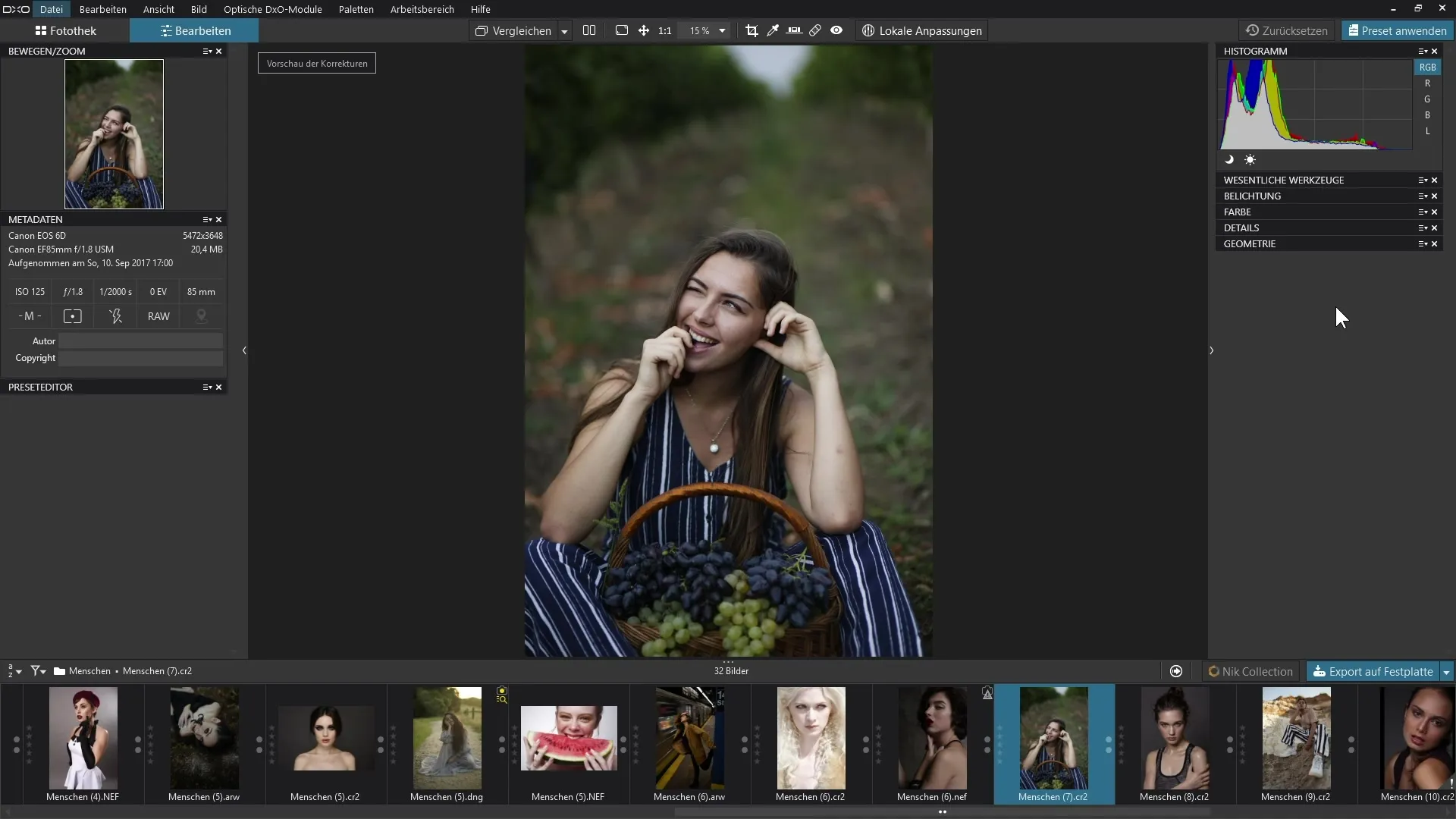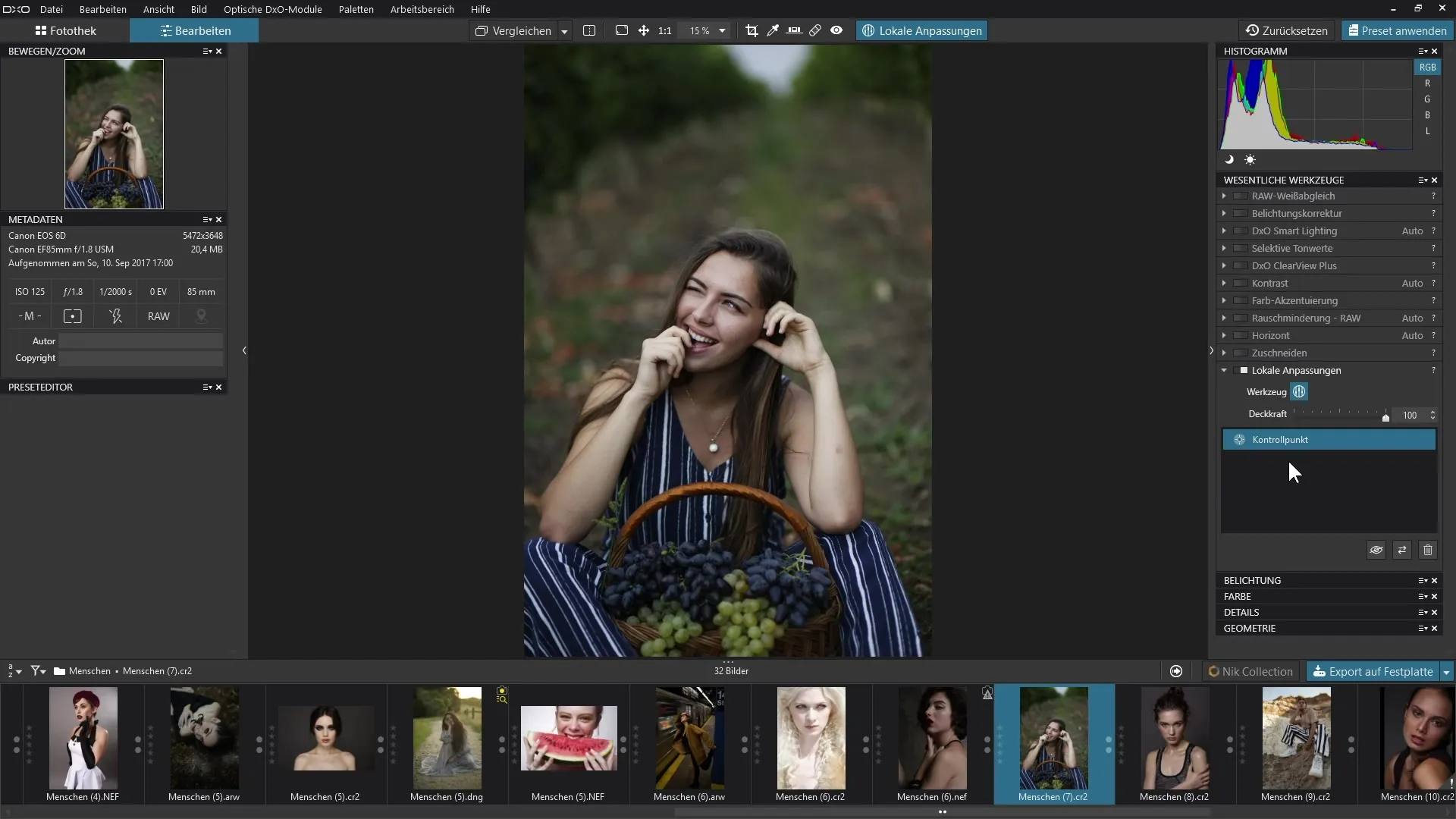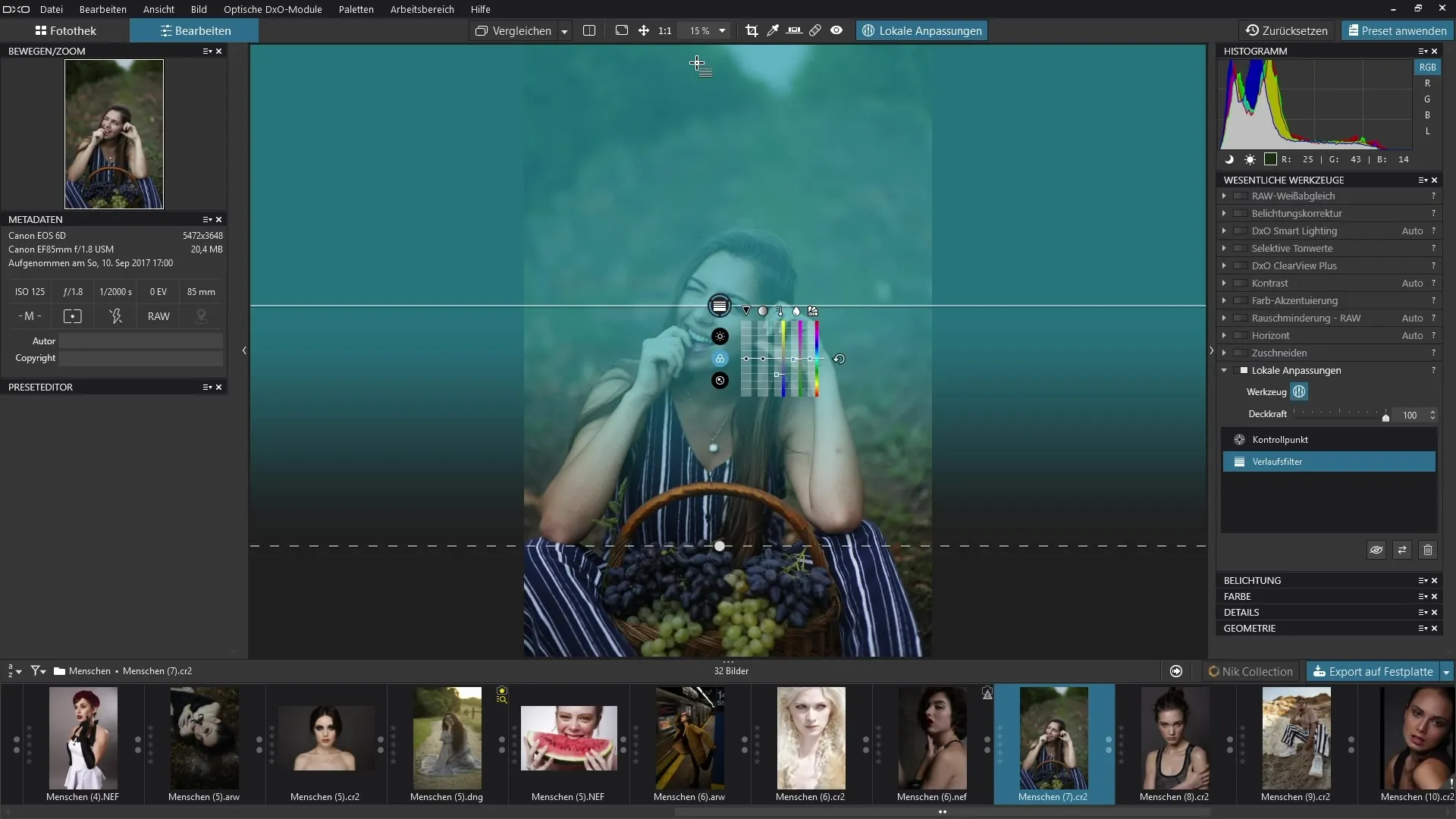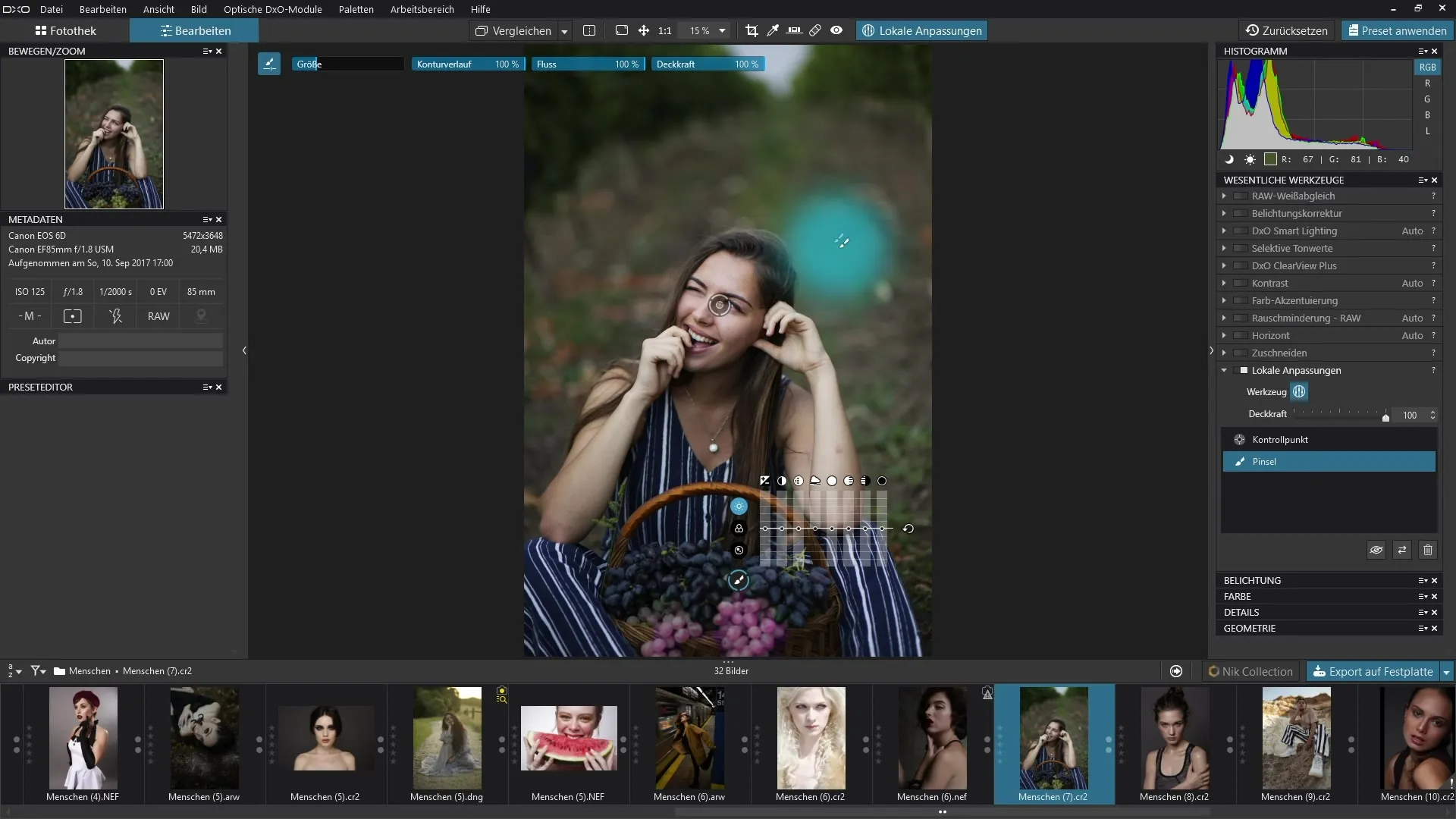You have learned the basic functions of DxO PhotoLab and now want to dive deeper into the possibilities of local adjustments. Local adjustments give you the flexibility to edit specific areas of an image without altering the entire shot. In this guide, I will show you how to make targeted adjustments and effectively improve your images.
Key Insights
- Local adjustments allow you to edit specific areas of an image, resulting in more precise outcomes.
- You can use various tools such as control points, gradient filters, and brushes to make targeted corrections.
- Adjustments in the categories of exposure, color, and details are available for local adjustments.
Step-by-Step Guide
Accessing Local Adjustments
To make local adjustments in DxO PhotoLab, first open the program and select the image you want to edit. Click on the "Local Adjustments" option at the top of the toolbar.

Setting Control Points
After opening local adjustments, you have the option to set control points on specific areas of your image. For example, clicking on a face will create a control point that you can move as you wish.

Adjusting Image Areas
Once set, you can adjust the size and position of the control point by dragging at the edges of the circle. Below, you will see the categories in which adjustments can be made, including exposure, color, and details.
Adjusting Exposure
In the "Exposure" category, you have the option to correct exposure, contrast, micro-contrast, and more. For example, you can specifically reduce the haze in a foggy area of the image without affecting other areas.
Making Color Changes
In the "Color" section, you can make adjustments such as saturation, color temperature, and hue ratio. For instance, you can increase the saturation and specifically apply the effect to a person's mouth area to emphasize their face.
Using Additional Features
In addition to control points, there is also the option to use a gradient filter. Click the option and drag the filter over the image. This allows you to make nuanced adjustments along the gradient, which can help intensify or soften colors in different areas of the image.

Using the Brush
If you want more control over your editing, a brush is also available. This allows you to edit only the areas you desire. For example, you can change the color of grapes in your image without affecting other green elements like the grass.
Adjusting the Brush
The brush can be further adjusted to increase precision. You can change the brush size by holding down the control key and moving the mouse wheel. The hardness of the brush can be adjusted by holding down the shift key and rotating the mouse wheel.
Final Edits
All of these local adjustments are independent of the filters in the various palettes. They allow you to specifically edit certain areas in an image. Be aware that the adjustments are limited to the functions available in the menus.

Summary – Local Adjustments in DxO PhotoLab: A Comprehensive Guide
Local adjustments in DxO PhotoLab are a powerful tool for enhancing your photos. With features like control points, gradient filters, and brush tools, you maintain control over specific image areas. Through precise adjustments, you can elevate your images to a new level.
Frequently Asked Questions
What are local adjustments in DxO PhotoLab?Local adjustments allow you to edit specific areas of an image without influencing the entire image.
What tools are available for local adjustments?You can use control points, gradient filters, and brushes to make targeted adjustments.
How can I adjust the brush size?Hold down the control key and move the mouse scroll wheel up or down to change the brush size.
In which categories can I make adjustments?Adjustments can be made in the categories of exposure, color, and details.
What options do I have for adjusting exposure?You can adjust exposure, contrast, micro-contrast, and much more to optimize areas of your image.


